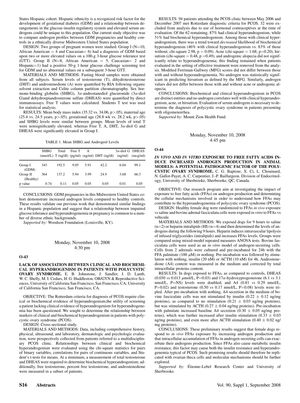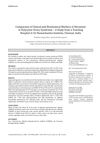Lack of Association Between Clinical and Biochemical Hyperandrogenism in Patients With Polycystic Ovary Syndrome
September 2008
in “
Fertility and Sterility
”

TLDR Clinical signs of excess male hormones and actual hormone levels in the blood do not always match in women with polycystic ovary syndrome.
In a study from 2008, researchers investigated the relationship between clinical and biochemical hyperandrogenism in patients with polycystic ovary syndrome (PCOS). The cross-sectional study included 94 patients who met the Rotterdam diagnostic criteria for PCOS, with 62 being analyzed after excluding those using hormonal contraceptives. The results showed that 87% of the patients had clinical hyperandrogenism, while only 51% had biochemical hyperandrogenism. There was a trend suggesting that those with clinical hyperandrogenism were less likely to have biochemical hyperandrogenism (46% vs. 83% without clinical hyperandrogenism, p = 0.09). No significant relationship was found between clinical signs of hyperandrogenism, such as acne, hirsutism, and androgenic alopecia, and biochemical hyperandrogenemia. The study concluded that clinical and biochemical hyperandrogenism are distinct entities in PCOS, and serum androgen evaluation is necessary for diagnosis in patients presenting with oligomenorrhea.
